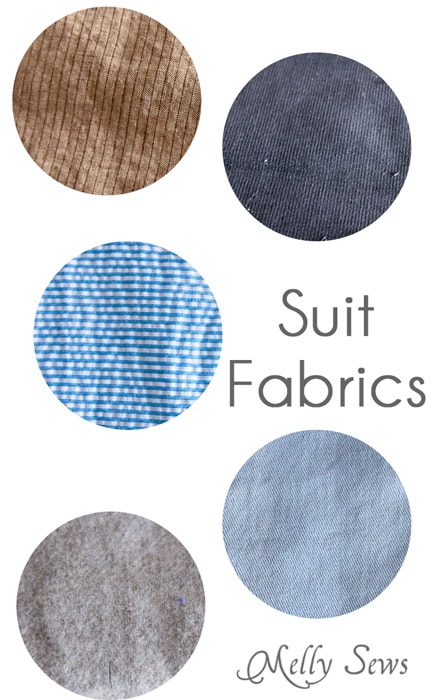 Hey y’all – welcome to the first day of the Berkshire Blazer Sewalong! Today we’re going to be talking about fabrics for blazers.
Hey y’all – welcome to the first day of the Berkshire Blazer Sewalong! Today we’re going to be talking about fabrics for blazers.
Blazers, by their nature, are more structured pieces of clothing. That means that some fabrics work better than others when sewing them. Today we’ll talk about a few, their pros and cons, and hopefully that will help you pick your perfect fabric for your blazer.
So let’s talk fabric.
Linen

True linen fabric is woven from flax, so it is a plant based fabric like cotton. Sometimes fabrics with a linen type weave are called linen, even when they are made from other fibers. So to make sure you have true linen, first look at the price tag, then look at the fiber content information on the bolt. In general linen with a high percent of actual linen is more expensive.
Linen fabric is often used for summer suits, as it feels cool to the touch and breathes well in hot weather.
At the same time, it is a very drapey fabric that wrinkles easily. So for suits, it needs a heavy weight interfacing in the collar and lots of ironing to look its best. Unless you want a rumpled look for a shabby-chic charm.
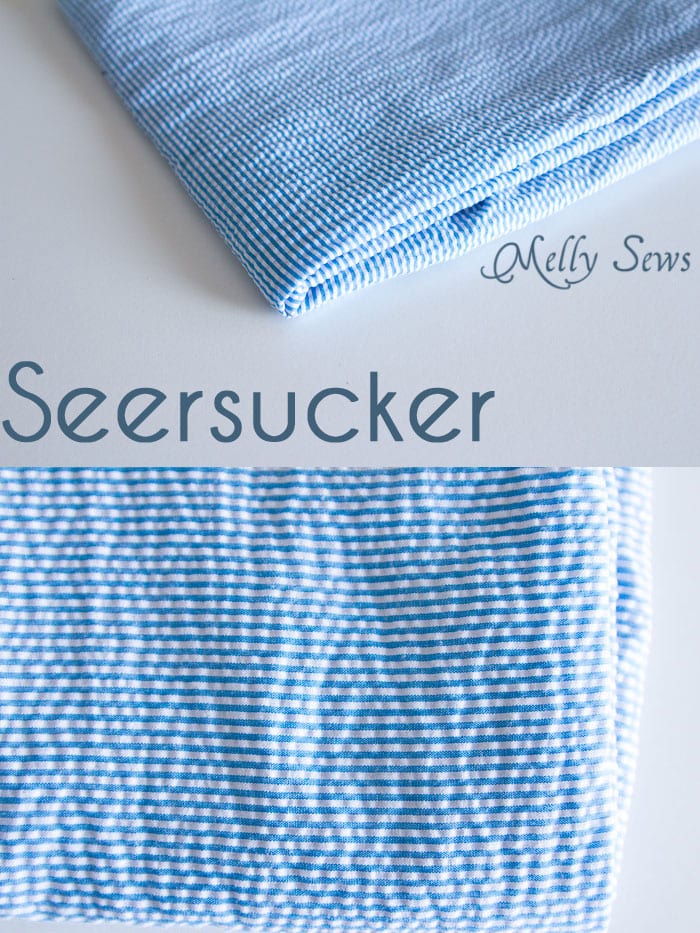
Seersucker is another summer suiting fabric. It is made of cotton, and though it may look smooth off the bolt, it wrinkles when washed to get that distinct crinkly look.
Like linen, seersucker breathes well. It doesn’t wrinkle as easily (because it’s already kind of wrinkly) or drape quite as much. It still needs interfacing in the collar to work well for a blazer. The blazer below was done in seersucker – you can see how it’s a nice casual feel. There’s also something about the colors of seersucker that just say spring to me.


Twill is one of my all time go to fabrics for blazers and pants. It’s made of cotton with a diagonal weave, as you can see in the image above. Twill has more structure, so sometimes you can even get away without interfacing it. The drawback to that is that it can be harder to ease sleeves in.
Since twill is cotton, it’s also easy to dye, which is another reason I love it. I can get any color I want – the sample above is hand dyed to get that perfect blue gray I wanted.
Twill blends often come in wrinkle resistant and stretch varieties too.
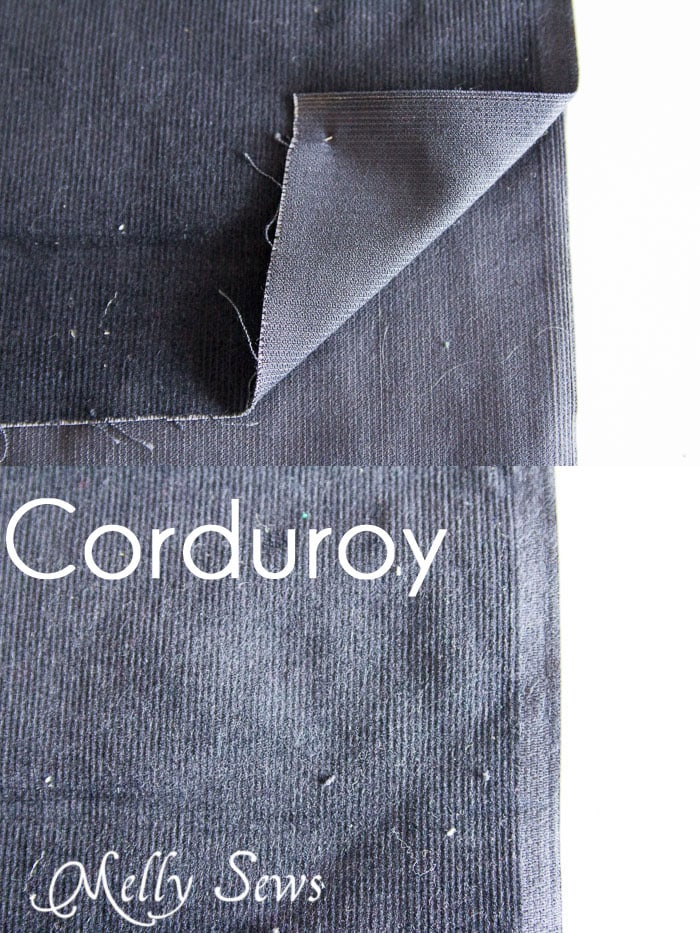
Corduroy is another suit/pants fabric I love. It is usually woven of cotton or a blend, and it has that characteristic striped pile on the right side of the fabric. This is called the wale of the fabric, and depending on the width of the stripes it can be classified as anything from wide to fine wale. Finer wale corduroy has more structure than wide wale. All kinds of corduroy tend to resist wrinkles and are warm.
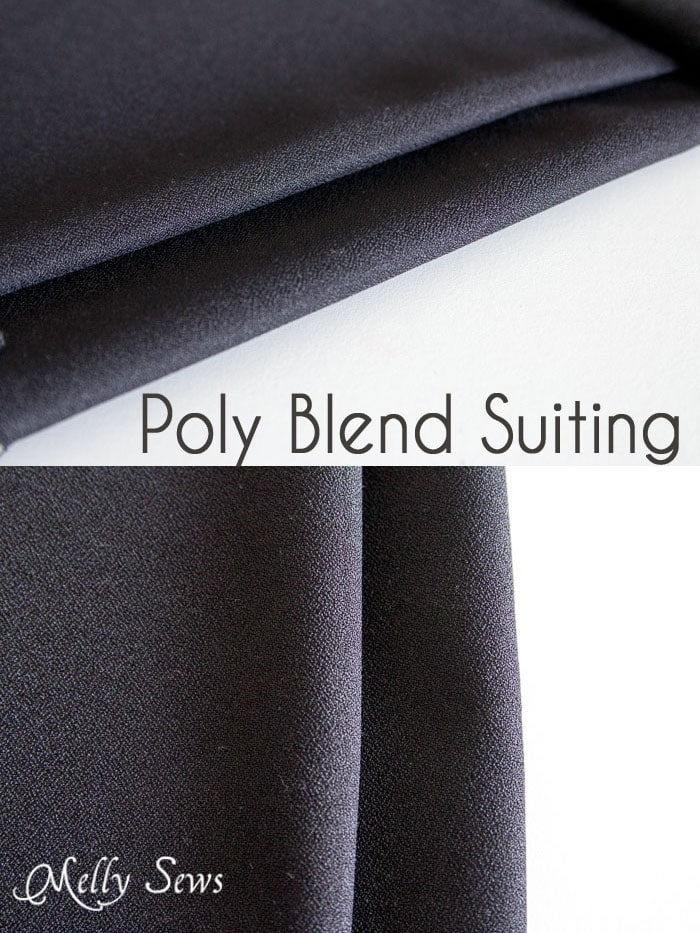
Poly blend suiting with a high polyester content has one advantage – it’s inexpensive. I’ve used it to make jackets that I know my boys won’t wear often, but I don’t like to sew with it. It’s often very drapey, requiring interfacing, and it frays a lot. It also doesn’t breathe very well, so it can be hot.
The blazer below is poly blend suiting.
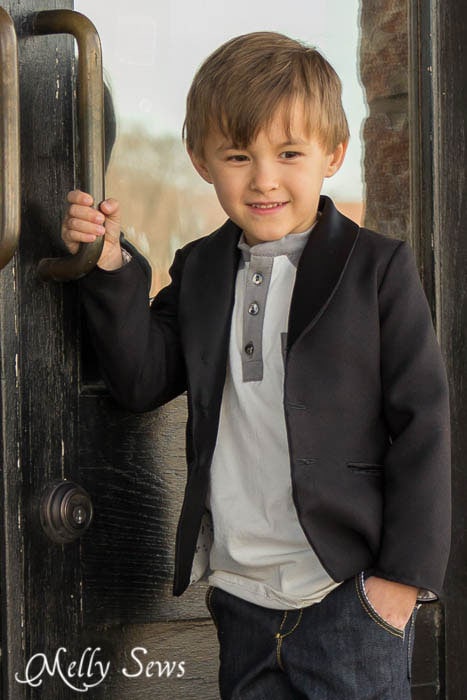
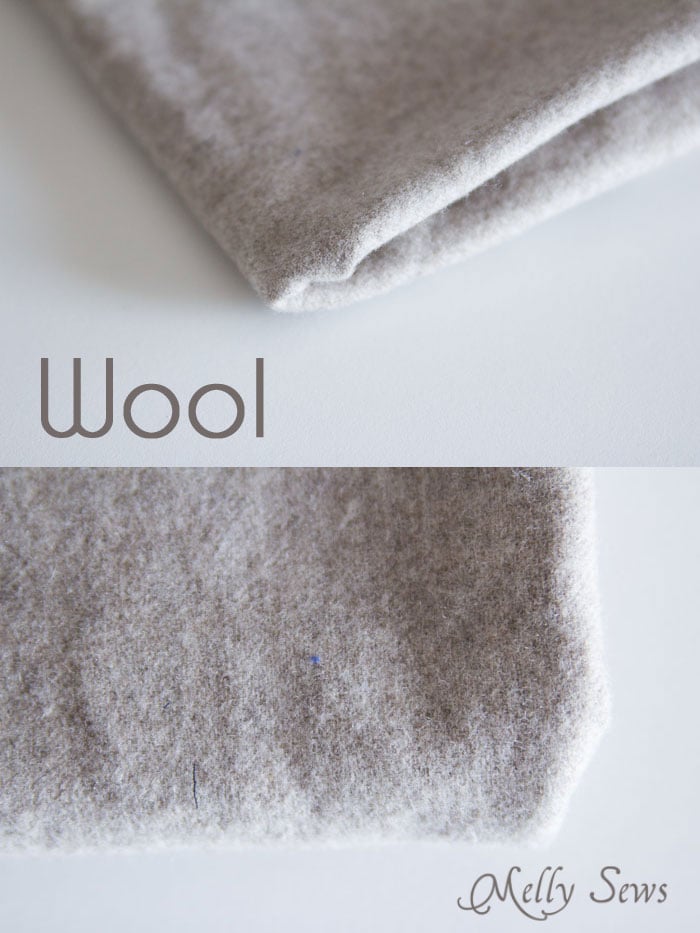
There is a reason wool is the standard fabric for nice suits. It comes in many weaves and thicknesses, from the coating weight shown above (warm) to summer weight suiting.
Because it is woven from wool fibers from sheep, it retains heat but also breathes well. It can be finished with anything from a fuzzy to fine texture, and it comes in all price ranges. I use it for coats that I think will get a lot of wear in the winter. In Texas, even summer suiting tends to be too hot.
Wool also varies from structured to drapey, and eases really well into sleeves.
So, depending on your climate, use, budget and what kind of look you’re going for, pick your fabric, and today in the Facebook group I’m asking you to share your fabric choices.

Leave a Reply